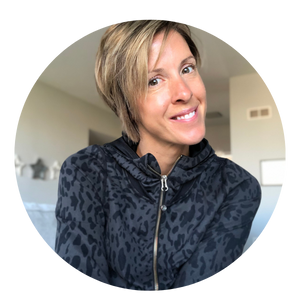
Bras for Triathletes
May 06, 2022Every woman’s breasts are different. In order to find the right sports bra for you, there are a few easy and tangible steps you can take to find breast-comfort during triathlon. In doing so, you can reduce chafing, bruising, soreness, and abrasions. Turns out - running doesn’t have to hurt!
Text by Miranda Bush, Feisty Triathlon Head Coach & Educator
We’re all endowed with different breasts. Some women can slide a cell phone into their cleavage on the bike, while others barely feel they need a bra. No matter your size or shape, your breasts are going to bounce when you run. And 40 years of research shows that most women – even if they’re wearing a sports bra – still at least occasionally experience breast pain and chafing during exercise. Breasts that hurt with every bounce are not conducive to a PR – they hurt performance and in some cases keep women from running in the first place.
To be fair, we’ve come a long way from the first sports bra invented in 1978 when Lisa Lindahl, Hinda Miller, and Polly Smith sewed two jockstraps together (seriously!). And scientists have been conducting fairly extensive biomechanical research over the past decade in an attempt to improve sports bra design. But injuries and pain persist. A well-fitted and supportive sports bra should be an essential piece of sporting equipment. But even so, few sporting organizations, sports medicine associations, or public health education programs, provide evidence-based guidelines on breast support for active women.
Thankfully some researchers have started to lead the charge in helping women exercise without breast pain. One of these women is Dr. Julia Alleyne, a longtime Sports Medicine Physician and associate professor at the University of Toronto, Department of Family and Community Medicine, who was honoured by the Canadian Association for the Advancement of Women in Sport and Physical Activity.
If you haven’t been able to find a sports bra that gets the job done, Dr. Alleyne’s article, The Bare Facts on Breast Care for Athletes, written for ShePower Sport is an excellent place to start. She also puts some long-standing myths to rest, like exercise will make your breasts sag. According to Alleyne, “the only ligaments in the breast (Cooper’s Ligament) hold the central breast to the chest wall. They are very strong and function as suspension support. They do not easily tear as they are flexible.”
That said, the right sports bra with the proper fit will help keep bouncing to a minimum and will also help you avoid other common breast-related exercise woes such as chafing, abrasions, bruising, contusions, tenderness, and soreness.
Finding Good Bras for Women who Tri
Sports bras fall into one of three categories: compression, encapsulation or encapsulation-compression. Compression sports bras hold your breasts in place by compressing them or pushing them against your body. These bras can be quite comfortable and work well for women with smaller breasts. Some compression sports bras will work for larger busts, but they can also cause a “uniboob,” which can lead to more chafing. If you have a large chest, consider encapsulation sports bras instead.
Encapsulation sports bras have a cup for each breast that separates your breasts and holds them in place (sometimes, but not always with an underwire). These are ideal for runners because they eliminate bounce and reduce strain. Encapsulation-compression sports bras push your breasts against your body and keep them fixed in the space of the individual cups. Encapsulation-compression bras work well for athletes of all sizes, especially women with larger breasts. These bras tend to have underwires, which offer structure and support.
How to Find Your Best Bra for Triathlon
Seek out the best overall fit for comfort. Look for bras that are supportive, seamless, sweat-absorbent, and provide compression. They should be ventilated, made with a porous fabric, and provide scapular reinforcement. A sports bra should be snug, but not too tight. It should fit tighter than a regular bra but shouldn't restrict breathing; you should be able to fit two fingers between the straps and your shoulders. The fabric of the cup should be smooth (not wrinkled). Wrinkles in the fabric are usually an indication that the cup is too big. Bras that are “worn in” should be tossed out!
Help Prevent Bruising. To minimize shoulder bruising find a bra with wider shoulder straps and/or add strap pads. For anterior breast bruising use less anterior compression – try an encapsulation or encapsulation-compression combination style.
Minimize chafing. The likelihood of chafing increases with moisture (as in coming out of the water and then sweating profusely while biking and running!). Ensure proper size and wear bras made of absorbent fabric to help decrease chafing. Seamless bras and barrier creams may help nipple and underarm chafing. For underwire chafing, ensure that the underwire is sitting flat against your sternum and ribcage, rather than against breast tissue. When experiencing chafing under your breasts along the rib cage, or near the hook and eye clasp, tighten the band as much as you can comfortably.
Get fitted often! Breasts change with puberty, pregnancy, weight loss or gain, after breast augmentation and/or reconstruction, through the menopause transition, and for other reasons. Dr. Julie recommends getting fitted (at least) annually. See the end of this article for practical links on finding sports bras for your current needs!
We can encourage breast care by beginning to normalize these kinds of conversations, starting at a young age. It is also important to acknowledge that bras are often quite expensive. Let’s advocate for more research and education, and also for more inclusive options for bodies and breasts of all sizes, and at all price points. Research and support companies and causes that help all women and girls in sport best support our breasts! (some options are noted at the end of this article).
Helpful Links: (None of these brands are endorsed by Feisty Triathlon)
For women in triathlon (all sizes): https://www.brabbly.com/best-bras-for-triathlon/
For runners (all sizes): https://www.runnersworld.com/uk/gear/clothes/a775937/16-best-running-sports-bras/
(More) Affordable Options: https://www.whowhatwear.com/cheap-sports-bras/slide6
For women with large breasts: https://www.womenshealthmag.com/uk/gym-wear/g25304174/best-sports-bras-large-breasts/
For small breasts: https://brasforsmallcups.com/best-sports-bras-for-small-boobs/
For triathletes in larger bodies: https://www.self.com/gallery/plus-size-sports-bras
Maternity & Nursing: https://www.scarymommy.com/spotted/maternity-sports-bras
Post-mastectomy sports bras: https://www.afittingexperience.com/7-of-our-softest-mastectomy-sports-bra/
After breast augmentation: https://thewiredrunner.com/best-sports-bras-for-implants/
To support women in need of sports bras: https://isupportthegirls.org/ www.thesportsbraproject.org; https://www.oiselle.com/pages/bras-for-girls
To recycle old bras: https://www.greenmatters.com/p/donate-bras; https://brightly.eco/where-to-donate-bras/

Miranda Bush is the Head Coach and Educator at Feisty Triathlon. She is USA Triathlon and Training Peaks certified, as well as a certified Health Coach. She is also a graduate of Dr. Stacy Sim’s Women Are Not Small Men and Menopause for Athletes courses. As a longtime coach specializing in training women, her passion lies in using lessons from training and racing to teach athletes to evolve physically, mentally, and emotionally through sport. Miranda is also a longtime athlete and multiple Ironman and 70.3 distance podium finisher, maintaining a consistent racing career while working and raising her kids. She resides in Wisconsin with her three teenagers and husband who all love to race triathlon.
Get Feisty Triathlon straight to your inbox
Get the low-down on what's happening in the world of women's triathlon, tips & tricks to crush it on the race course and be the first to know about special offerings from our feisty sponsors.
We hate SPAM. We will never sell your information, for any reason.

